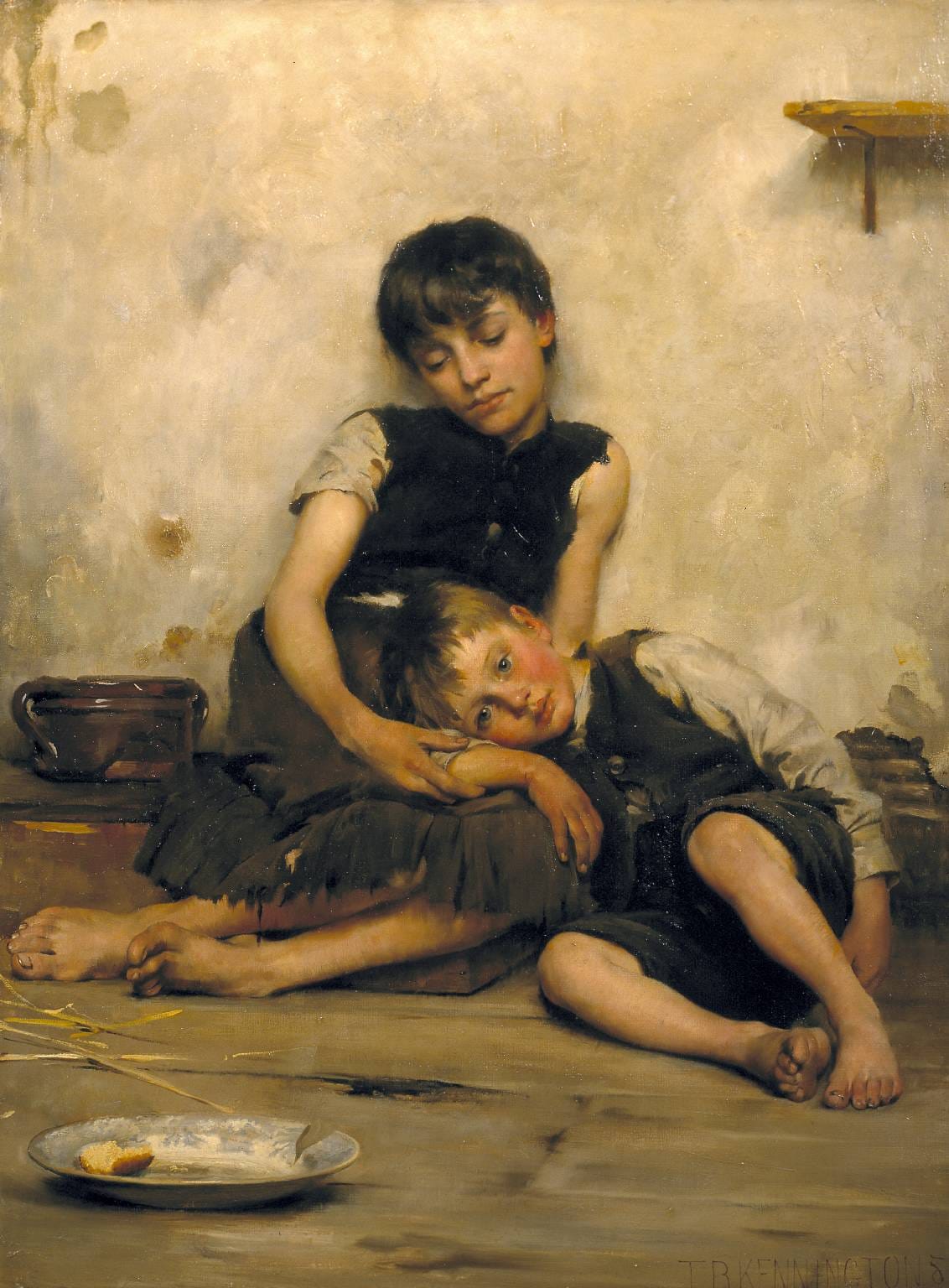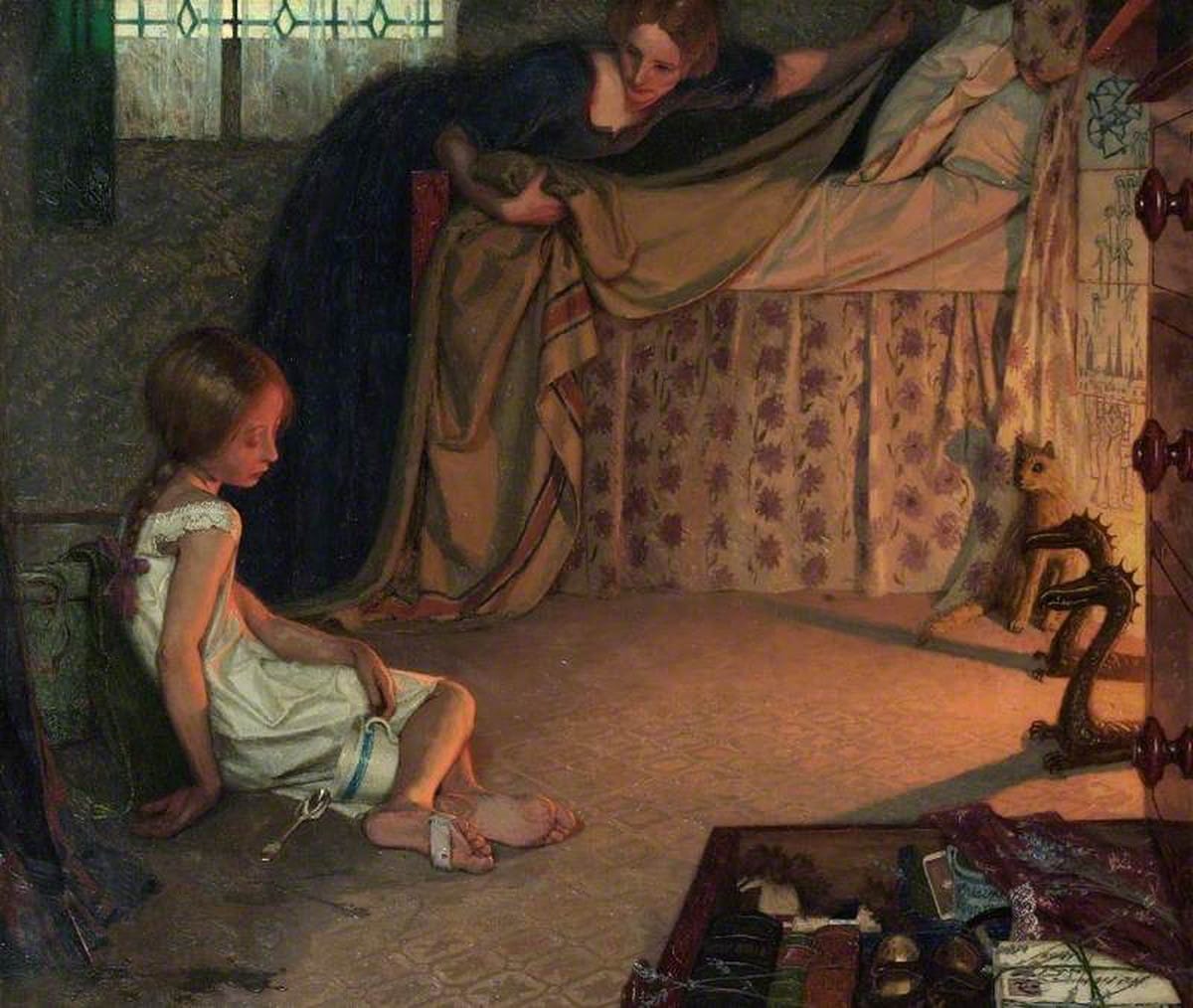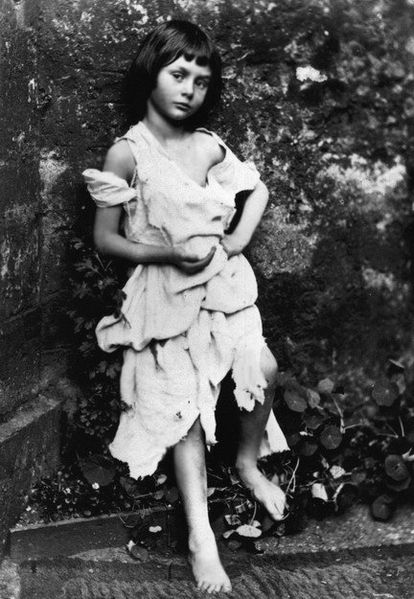Orphans in Victorian Literature and Art

In the years before Queen Victoria came to the throne in 1837, the English aristocracy contemplated its survival and began making concessions. 1832 was the first significant year, with the Reform Act, whereby voting rights were extended to adult males with property worth more than £10. It only passed after the country nearly experienced a revolution. Chartism was born at the same time. Additional legal reforms such as the Factories Act and the Slavery Abolition Act passed in 1833 to benefit the poor. Agitation against the Poor Law reforms, an economic depression in 1837 and the rapid growth of workhouses all helped precipitate an overdue literary rebellion to go along with it.
This was the time when orphans fully arrived in the national consciousness. Charles Dickens' The Adventures of Oliver Twist (1837-39) and A Christmas Carol (1843) and the later David Copperfield (1850) and Great Expectations (1860-61) grew out of Dickens' own childhood experiences. Although he was no orphan, he worked in a shoe-blacking factory and his father was thrown into Marshalsea Prison for debt. Elizabeth Barrett Browning's poem The Cry of the Children appeared in 1842. Below is Thomas Kennington's Orphans (1885).

Orphans soon became the heroes and heroines of more conservative genres, including Becky Sharp of Vanity Fair (1847-48), Heathcliff in Wuthering Heights (1847) and Jane Eyre (1847). The hero of Thackeray’s The History of Henry Esmond (1852) is really an orphan for all practical literary purposes. So is Esther Summerson, the heroine of Dickens’ Bleak House (1852-53); her mother believes her to be dead as the novel begins. Wilkie Collins’ The Woman in White (1859-60) uses illegitimacy as a plot twist. Orphans also appeared indirectly in the constant flood of evangelical morally instructive tracts and sentimental fairytale literature.
However, illegitimate children, as opposed to orphans, were a tougher challenge for Victorian writers. They rarely confronted the consequences of illegitimacy because they faced prosecution or an alienated readership because, as everyone knew, illegitimacy implied illicit sex, which was not a fit subject for literature. Elizabeth Gaskell’s Ruth (1853) is the most interesting of these, along with Anthony Trollope’s Doctor Thorne (1858) and George Eliot's depressing Adam Bede (1859). Below is Frederick Cayley Robinson's evocative The Foundling (1896) - she appears to be asleep - what is her story?

It was left to the Americans - Nathaniel Hawthorne's magisterial The Scarlet Letter (1850) - to confront adultery, maternity and paternity head on. The narrative focus remains on the mother, not the child. That would be singular enough, but Hester Prynne is unquestionably the book’s heroine and she survives to the end of the novel, in a century when writers, male and female, killed off their heroines.
Lewis Carroll’s Alice (1865) doesn’t seem to have any parents at all. Below is Alice Liddell as a Beggar Girl in an 1858 photo taken by Carroll.

